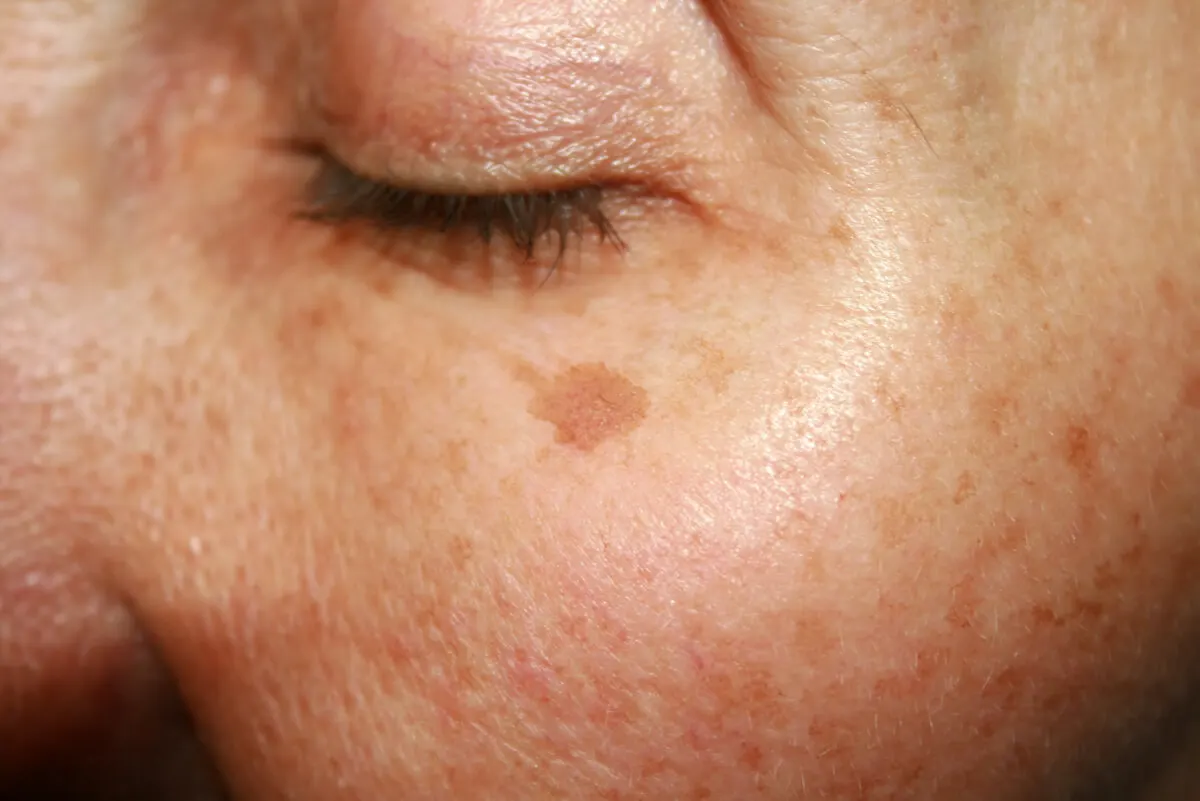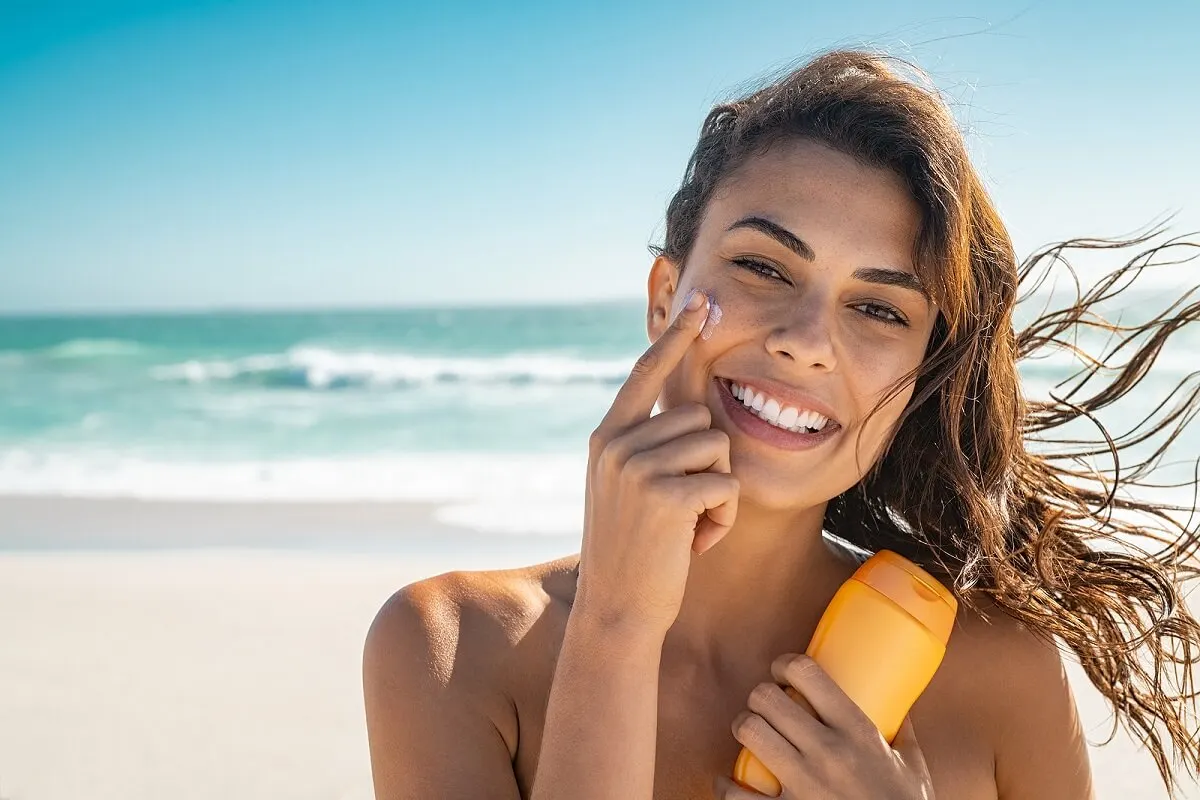How to Prevent Hyperpigmentation this Summer

Hyperpigmentation tends to occur more frequently during the summer. This condition refers to the darkening of part of the skin. In particular, it tends to occur in fair-skinned people, when some cells produce more melanin than others in response to sunlight. The result is similar to freckles but can spread over a wider area.
Sunlight isn’t the only cause, but it is one of the most frequent. For this reason, during the summer season, it’s necessary to take extreme precautions and adopt some measures to protect the skin from the sun’s radiation. What should you bear in mind? In the following article, we’ll let you know.
What is hyperpigmentation?
Hyperpigmentation is a process characterized by the appearance of patches on the skin, of a darker color. These are usually brown. However, they can also be black or gray. It often manifests itself in three ways. These are detailed below.
- Axillary ephelides. These are the typical freckles. They’re small pigmented lesions that almost always appear on the cheeks, upper lip, and forehead. They’re usually present since childhood, but the sun enhances them.
- Actinic or solar lentigines. These spots are larger than freckles. They tend to appear on the cheeks, temples, forehead, back of the hands, and décolleté. They’re a response to the sun’s rays.
- Melasma or blotchiness. These are diffuse brownish spots that appear on the face. They can be a response to the sun, but more often they are an effect of pregnancy or contraceptive use.

Why does it occur?
Hyperpigmentation is more common in times like summer due to constant exposure to the sun. This situation increases the risk of sunburn and causes the skin to activate its natural defenses. The latter consists of an increase in the production of melanin, a substance that darkens the skin surface.
To a certain extent, this mechanism prevents the sun’s rays from penetrating the most vulnerable areas. Even so, if melanin is produced in excess, and freckles, lentigines, or melasma appear.
These processes are more frequent and more noticeable in people who have acne, psoriasis, or eczema. Hormonal changes also activate melanin production. For that reason, hyperpigmentation also appears due to pregnancy or the use of contraceptives.
Continue reading: Slugging, the Skin Care Trend You Need to Know About
Tips to prevent hyperpigmentation this summer
There are some measures that can help to prevent hyperpigmentation from occurring during the summer or any season. The most important thing is to apply them consistently in order for them to be effective. Take a look at the tips here – don’t miss them!
Exfoliation
The use of an exfoliating scrub, once or twice a week, is ideal for removing dead skin cells. Incidentally, this helps to greatly reduce the presence of hyperpigmented cells. However, it isn’t advisable to exfoliate too often or with very aggressive methods, as this weakens the skin.
It’s best to use chemical exfoliants with acidic ingredients. Products with glycolic acid, lactic acid, or salicylic acid are ideal for managing hyperpigmentation. In addition, they cleanse, rejuvenate and illuminate the skin.
Protect from inflammation
It’s important to avoid creams and cosmetic products that cause inflammation of the skin. Likewise, after exposure to the sun, it’s advisable to use an anti-inflammatory cream. The most advisable are those containing vitamin E, resveratrol, and Centella Asiatica.
Use sunscreen and other protective products
Using sunscreen every day is essential in order to prevent hyperpigmentation. This should be done without fail, even if the days are cloudy. It should be applied every two to three hours, even if there’s only sun exposure through a window.
This product adds an extra layer to the skin. It helps prevent hyperpigmentation from spreading. There are several formats and it’s best to consult a dermatologist about which is the most appropriate in each particular case.
A higher amount should be applied on spots, freckles, or lesions such as scars, if any. The sun protection factor (SPF) should be higher than 30.

Caution with tanning beds
Tanning beds are a way to get tanned skin without being exposed to the sun. However, caution should be exercised when using them, as they also have the potential to produce spots. They may even be a risk factor for skin cancer. A dermatologist should be consulted in this regard.
You may be interested in: The Benefits of Having a Solarium at Home
How to reduce hyperpigmentation on the skin
If hyperpigmentation is already present, there are ways to reduce or eliminate it. It’s very important to discuss the issue with a dermatologist so that he/she can provide guidance on the best options in each case. The doctor must determine the cause of the problem before starting treatment.
In any case, it’s advisable not to expose yourself to the sun during the treatment. There are several cream products to combat hyperpigmentation. These act by reducing or blocking the production of melanin, or by increasing the cellular renewal of the skin.
Treatment with creams is usually long-term, so consistency is required. Also, sometimes it isn’t recommended that this type of measure be applied during the summer. Other options are aesthetic procedures such as the following:
- Professional peels
- Phototherapy treatments with laser or pulsed light
- Microdermabrasion treatments
What should you remember?
Ideally, both prevention and treatment for hyperpigmentation should be accompanied by a proper diet. It’s best to eat foods rich in polyphenols and antioxidants, as these nourish and repair the skin.
It’s very important to include the application of sunscreen in your daily routine. Since these products are very varied, it’s advisable to consult a professional to identify the one that best suits your skin type.
All cited sources were thoroughly reviewed by our team to ensure their quality, reliability, currency, and validity. The bibliography of this article was considered reliable and of academic or scientific accuracy.
- Cestari TF, Dantas LP, Boza JC. Acquired hyperpigmentations. An Bras Dermatol. 2014;89(1):11-25. doi:10.1590/abd1806-4841.20142353
- Vashi, N. A., & Kundu, R. V. (2013). Facial hyperpigmentation: causes and treatment. British Journal of Dermatology, 169, 41–56. https://doi.org/10.1111/bjd.12536
- Arif T. Salicylic acid as a peeling agent: a comprehensive review. Clin Cosmet Investig Dermatol. 2015;8:455-461. Published 2015 Aug 26. doi:10.2147/CCID.S84765
-
Fatima S, Braunberger T, Mohammad TF, Kohli I, Hamzavi IH. The Role of Sunscreen in Melasma and Postinflammatory Hyperpigmentation. Indian J Dermatol. 2020 Jan-Feb;65(1):5-10. doi: 10.4103/ijd.IJD_295_18. PMID: 32029932; PMCID: PMC6986132.
- Schulman JM, Fisher DE. Indoor ultraviolet tanning and skin cancer: health risks and opportunities. Curr Opin Oncol. 2009;21(2):144-149. doi:10.1097/CCO.0b013e3283252fc5
This text is provided for informational purposes only and does not replace consultation with a professional. If in doubt, consult your specialist.








